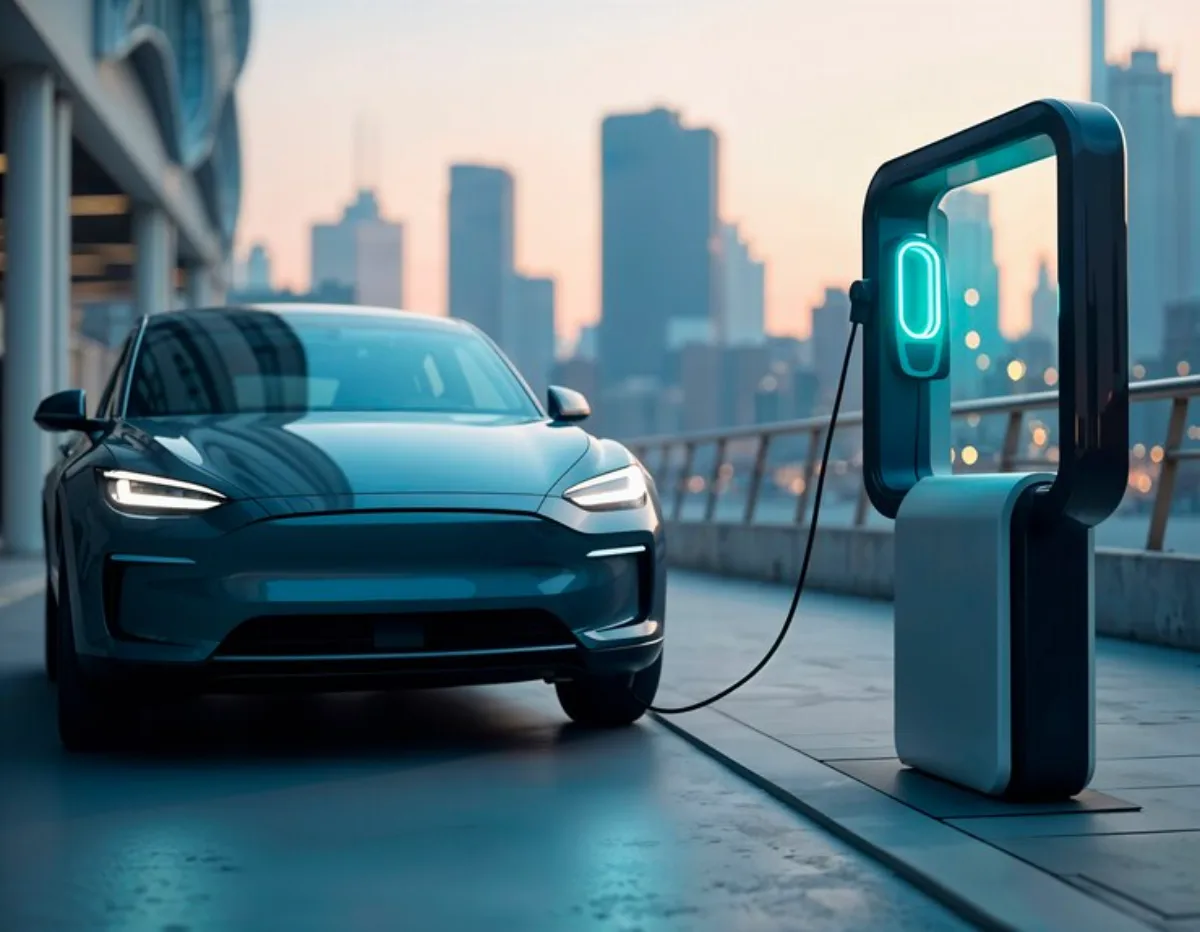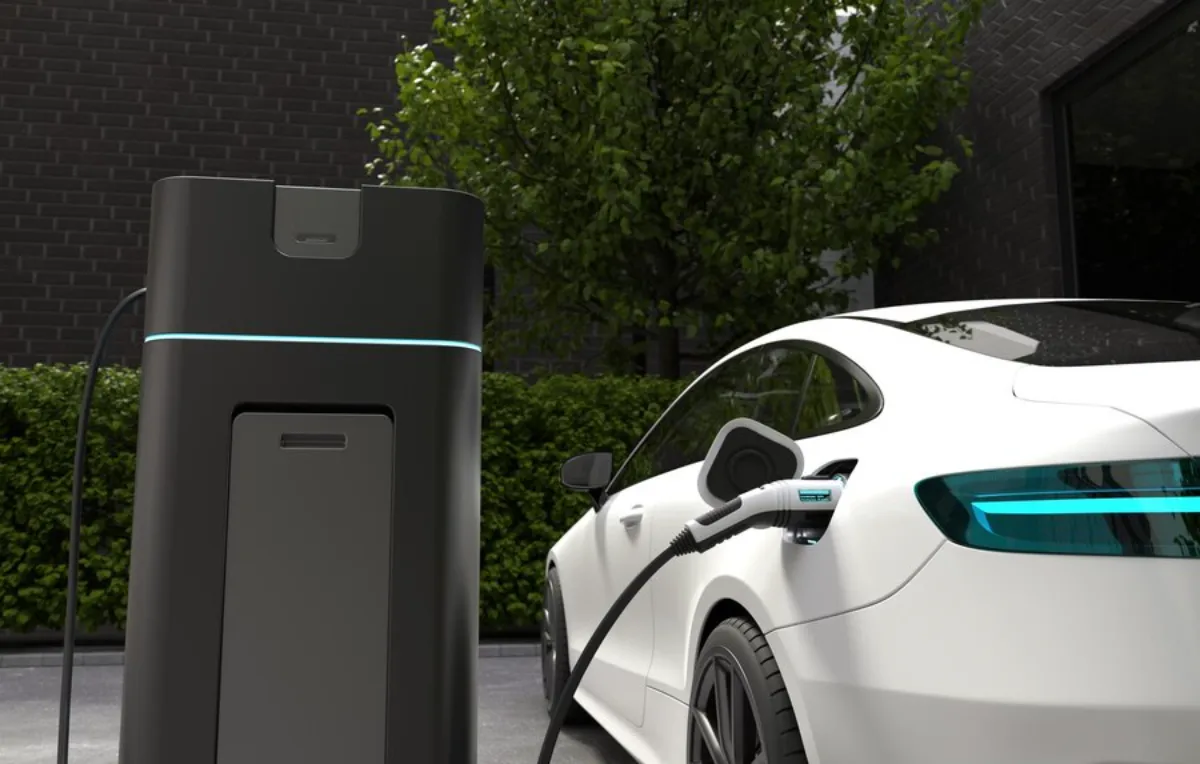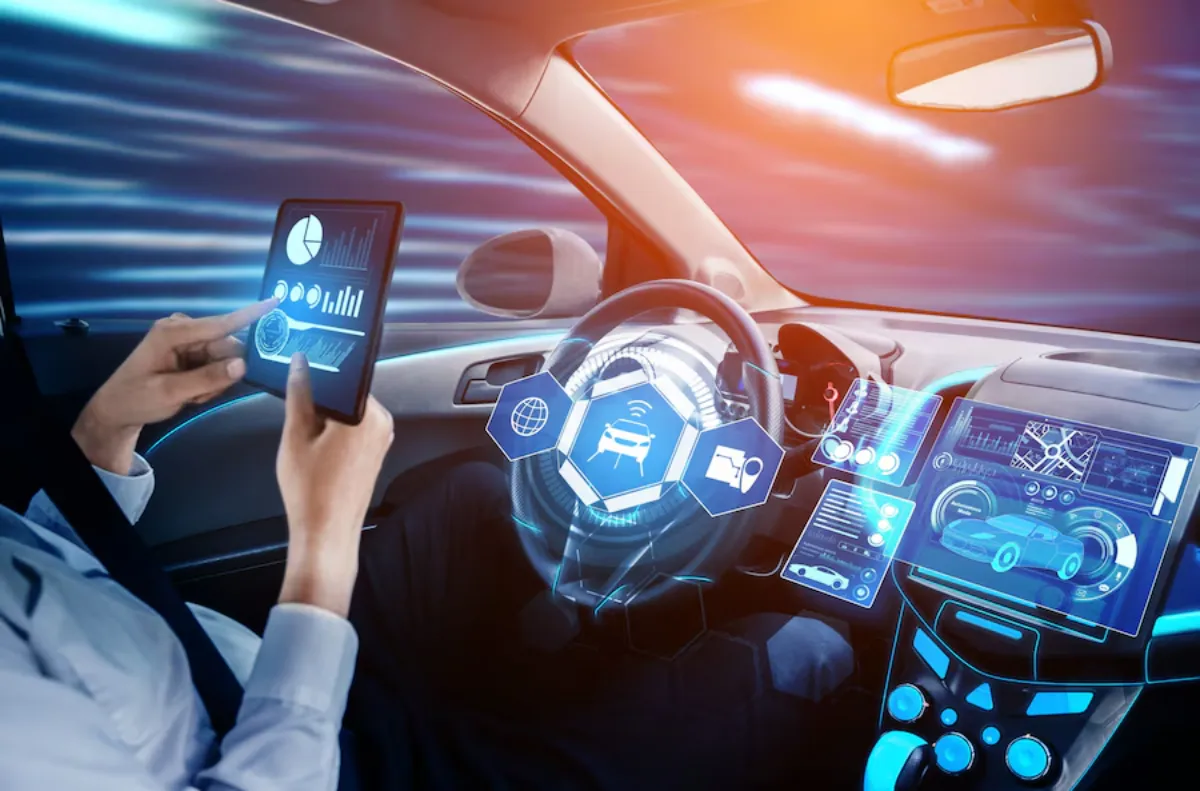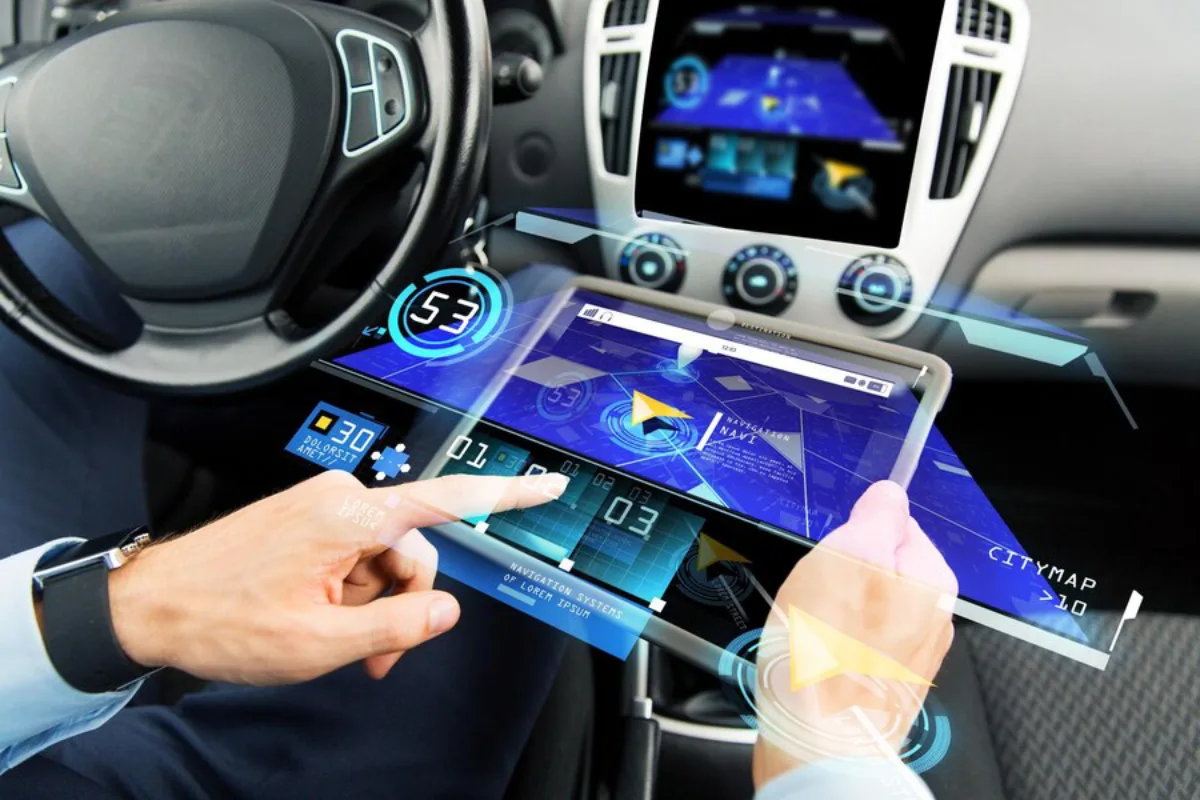
The Future of Electric Vehicles & Autonomous Driving
The automotive industry is changing fast. This shift is fueled by new EV trends 2025 and quick progress in self-driving tech. The move to electric and self-driving cars is changing transportation. It cuts carbon emissions and leads to smarter mobility solutions.
Governments around the world, like the UK, are aiming high. They want to replace internal combustion engine (ICE) vehicles with electric ones. Automakers are also investing a lot in self-driving technology. This aims to boost safety and efficiency. Thanks to improved battery tech, more charging spots, and advanced self-driving features, electric cars will be cleaner, safer, and more efficient in the future.

The Rise of Electric Vehicles
Key EV Trends for 2025
As we approach 2025, several EV trends are shaping the electric car future. These trends are crucial to making EVs more accessible, cost-effective, and efficient:
- Longer Battery Range – New battery tech is improving driving ranges. This makes EVs better for long trips. Solid-state batteries provide better energy density and quicker charging. They are likely to start commercial production soon.
- Faster Charging Infrastructure – The expansion of ultra-fast charging networks is reducing range anxiety. Public charging stations that can provide 80% charge in less than 20 minutes are popping up more across the UK and Europe.
- Affordable Electric Cars – As production scales up, EV prices are expected to drop, making them accessible to a broader audience. Many car brands are launching affordable models. They want to compete with regular petrol and diesel cars.
- Government Incentives and Regulations – Many countries, like the UK, are setting stricter emission rules. They also offer subsidies to encourage EV adoption. The UK government has pledged to ban the sale of new petrol and diesel cars by 2035.
- Sustainable Battery Production – Recycling efforts and new battery types seek to lessen the need for rare earth materials, making EVs more eco-friendly. Efforts are being made to establish a circular economy for EV batteries, ensuring their reuse and recycling.
The Impact of EV Adoption
The rise of electric vehicles will greatly impact society, the economy, and the environment:
- Cutting Carbon Emissions – EVs have zero tailpipe emissions. This greatly reduces pollution and helps fight climate change.
- Better Energy Efficiency – Electric motors use energy better than internal combustion engines. They turn more energy into movement.
- Decreasing Fuel Dependency – Switching to EVs cuts fossil fuel use. This boosts energy security and supports renewable energy. Many charging stations are now powered by solar and wind energy.
- Improving Urban Air Quality – Fewer emissions from transportation mean better air quality in cities. This leads to reduced health risks linked to pollution.
- Job Creation in the EV Sector – The shift to electric vehicles is creating jobs in battery making, charging station development, and software engineering.

The Evolution of Autonomous Driving
The Different Levels of Autonomous Driving
Autonomous driving technology is progressing at a rapid pace, but full autonomy is still a few years away. The levels of self-driving capabilities range from basic assistance to full automation:
- Level 1 – Basic driver assistance (e.g., adaptive cruise control and lane-keeping assistance).
- Level 2 – Partial automation, requiring driver supervision (e.g., Tesla Autopilot and GM’s Super Cruise).
- Level 3 – Conditional automation. The vehicle drives itself in certain conditions but needs human help. For example, the Mercedes-Benz Drive Pilot.
- Level 4 – High automation. The car can manage most driving tasks without help. This works best in certain areas, like autonomous taxis in controlled cities.
- Level 5 – Full automation, where no driver is needed at all, allowing for completely self-driving cars with no steering wheel or pedals.
How Autonomous Driving is Changing Mobility
The advancements in autonomous driving technology will revolutionise transportation by:
- Reducing Traffic Accidents – AI systems cut human errors. These errors cause most road accidents.
- Boosting Road Efficiency – Self-driving cars can improve traffic flow, cutting congestion and travel times.
- Enabling Mobility for All – Autonomous vehicles offer transport options for those who can’t drive, like the elderly and disabled.
- Transforming Car Ownership Models – Ride-hailing services with self-driving cars might lower the need for owning a private vehicle, encouraging shared mobility.
- Lowering Insurance Costs – As self-driving technology makes roads safer, fewer accidents should lead to lower insurance premiums.
Challenges in Autonomous Driving Adoption
Even with fast progress, we still face challenges before full autonomy can be common:
- Regulatory and Legal Barriers – Governments must create laws and safety standards for self-driving cars. This includes rules about who is responsible if an accident happens.
- Public Trust and Acceptance – Many people are still unsure about how safe and reliable autonomous technology is.
- Cybersecurity Risks – Cars are getting more connected. This makes them targets for hacking and data breaches.
- Infrastructure Needs – We need to update roads, traffic signals, and communication networks for autonomous vehicles.
The Convergence of EVs and Autonomous Technology
Electric cars and self-driving technology go hand in hand. EVs are the top choice for autonomous driving. Here’s why:
- Easier Engineering – EVs have fewer moving parts than regular cars. This makes them better suited for self-driving systems.
- Seamless Software Integration – Electric vehicles come with smart software. This matches the need for autonomous technology.
- Energy Efficiency – Self-driving EVs can optimise energy usage, reducing unnecessary acceleration and braking.
- Fleet Electrification – Ride-hailing companies and public transit are investing in electric, self-driving fleets. This move aims to reduce costs and cut emissions.
The Road Ahead: What to Expect by 2030
Key Predictions for the Future
By 2030, we can expect:
- Widespread EV Adoption – With battery prices dropping and charging networks expanding, EVs could become the majority of new vehicle sales.
- Advanced Self-Driving Capabilities – More cities may introduce autonomous taxi services, reducing the need for personal car ownership.
- Smart Traffic Management Systems – AI-driven traffic coordination will improve road efficiency and reduce congestion.
- Integration with Smart Cities – EVs and self-driving cars will be part of interconnected urban systems, communicating with infrastructure for optimal routing and efficiency.

Driving Into the Future: How EVs and Autonomy Are Reshaping Transportation
The combined evolution of EV trends 2025 and autonomous driving is set to redefine personal and public transportation. The electric car future is bright. New battery tech, AI mobility solutions , and eco-friendly practices will lead the next wave of car innovation.
Governments, automakers, and tech companies need to join forces. They must tackle challenges together. This way, more people can enjoy the benefits of these innovations. The journey to a smarter, cleaner, and more independent future has just started. The next ten years will be key in changing how we travel.


